Chart(er)ing a Course Out of the Messy Middle
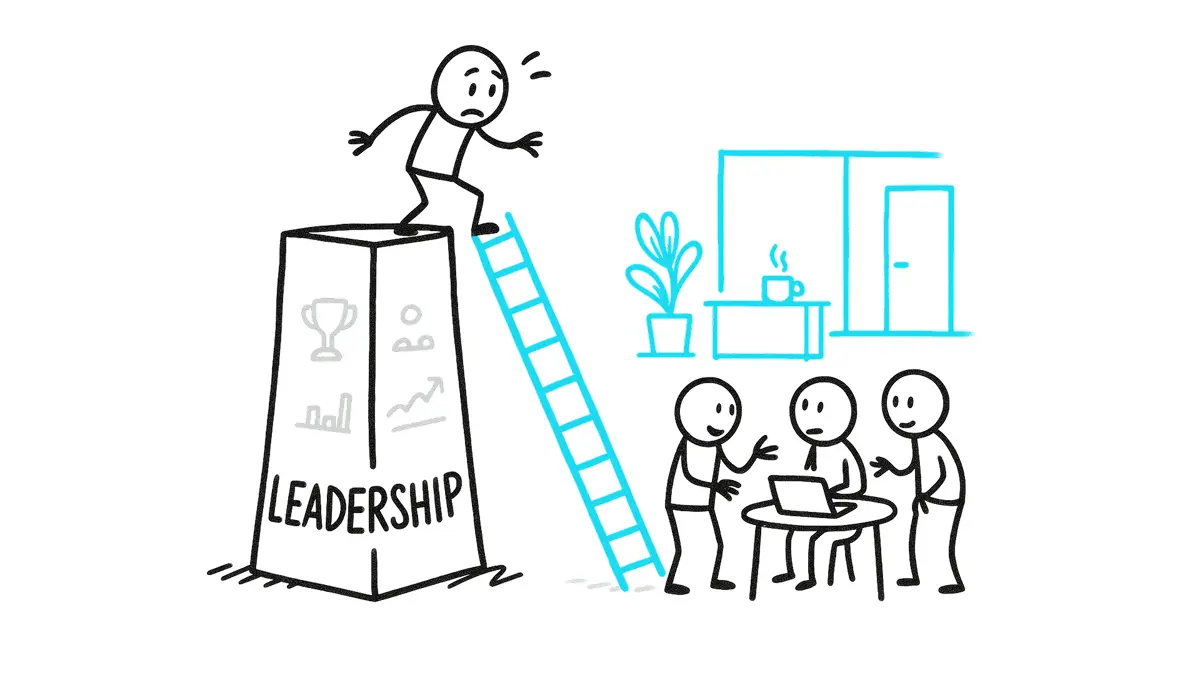
Beyond 'Uncertain Times
Katie Burke, Chief People Officer of Harvey, opened last week's Charter's Workplace Summit with a motivating confession:
I am sick of writing 'in these uncertain times.'
Katie said she prefers to focus on "the mess" rather than guessing what comes next. By the conference's close, everyone was discussing how we had landed in a "messy middle" where experimentation is critical.
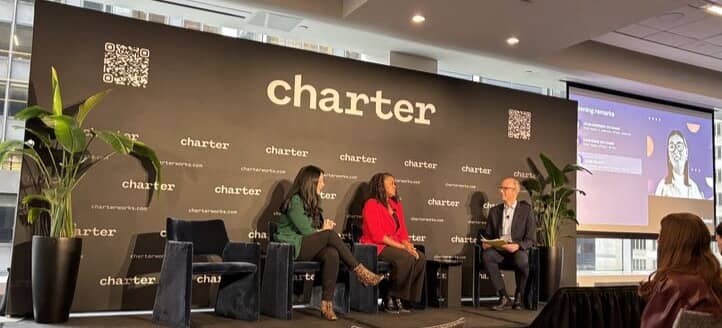
Interdisciplinary convening at Charter matters in this middle space. When people leaders, workplace strategists, economists, and technologists come together, something valuable emerges. No single function has the complete picture of how work is transforming.
The day's sessions revealed three interconnected patterns that explain why workplace transformation currently feels so challenging.
Lead Across the Lines of Modern Work with Phil Kirschner
Over 22,000 professionals follow my insights on LinkedIn.
Join them and get my best advice straight to your inbox.
Shopping for Employee Experience
Valence CEO Parker Mitchell made a provocative observation that “roles are shifting from producing to evaluating because of AI,” which may challenge workers’ identities and engagement.
That identity crisis shows up in retention data, generational behavior, and succession planning risks across industries.
Lisa Simon, Chief Economist at Revelio Labs, warned that “GenZ shops around for the right job,” averaging just one year of tenure per company. On the other end of the generational spectrum, AARP’s Carly Roszkowski noted that older workers demonstrate higher engagement and lower turnover. This dynamic creates a compound problem for organizations.
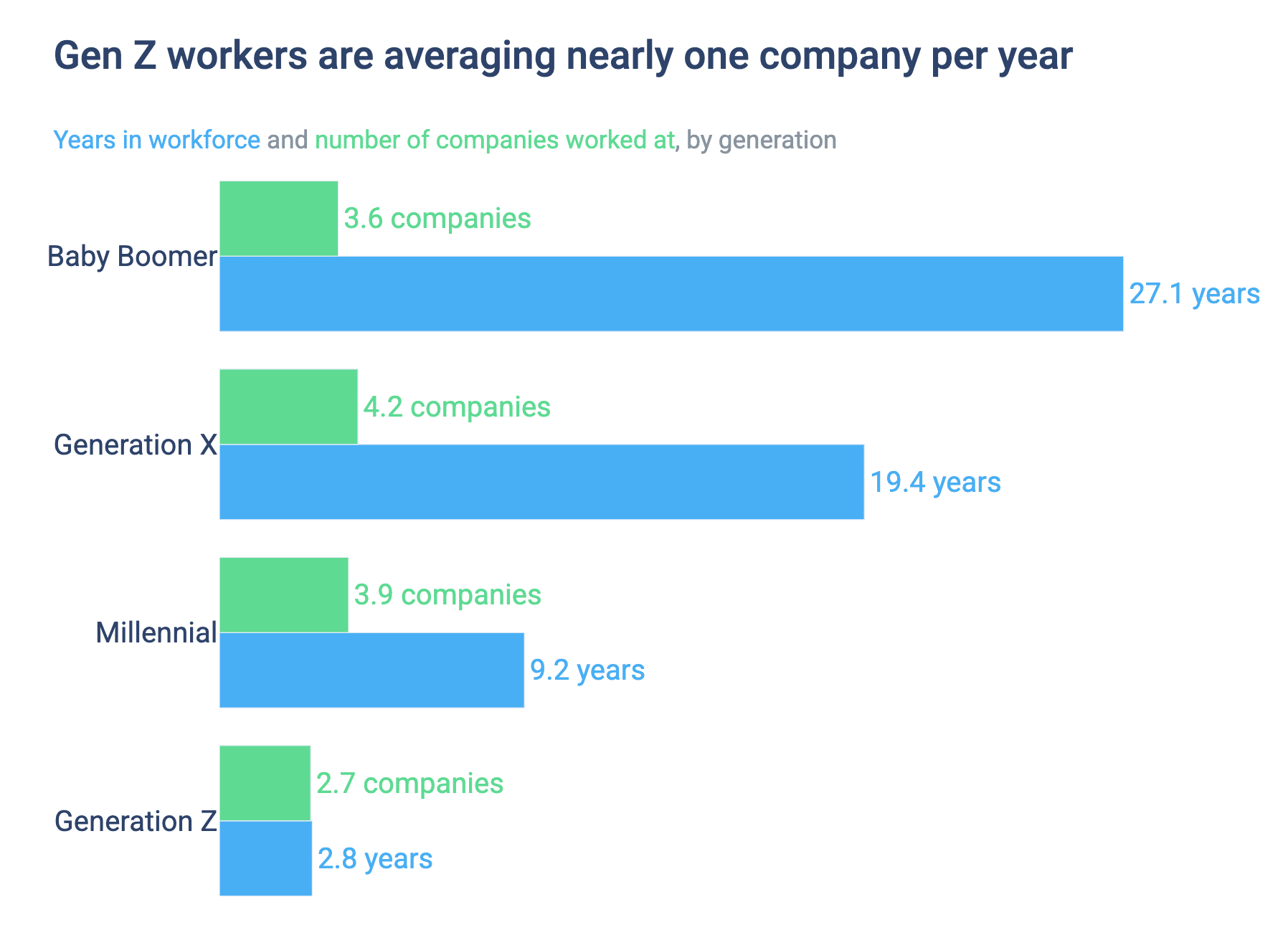
Older workers linger, younger workers leave at accelerating rates, and AI disrupts the entry-level work that builds future leaders. Professor Joseph Fuller emphasized that while AI can accelerate onboarding and level performance gaps, retention and development matter more than ever.
Lisa also shared data showing that culture matters more in a cooler labor market. When employees have fewer options, culture becomes the differentiator.
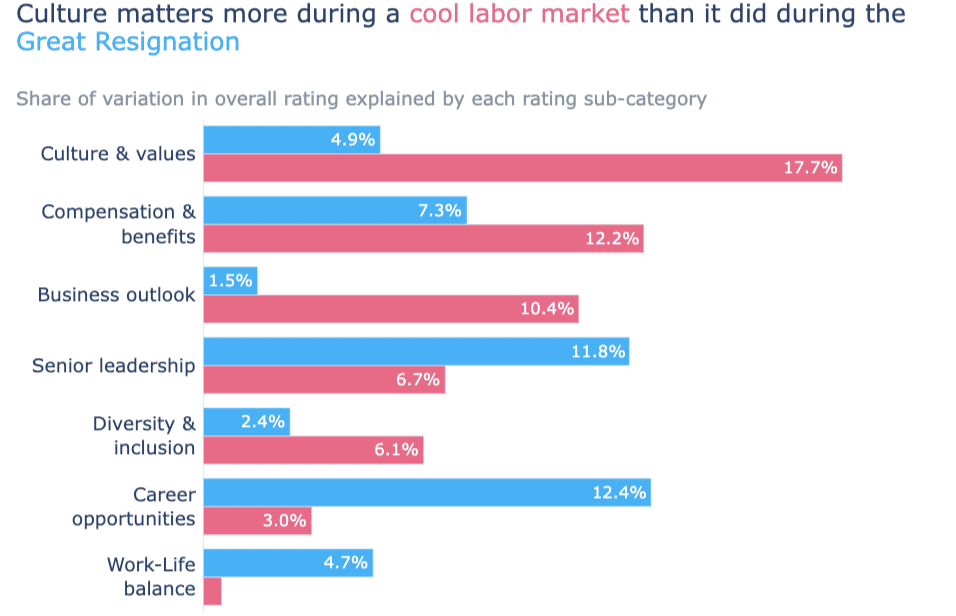
We're asking people to redefine their relationship with work while simultaneously competing for talent who expect what Databricks Chief People Officer Amy Reichanadter called “consumer-grade experiences,” referencing ticketing systems and technical support.
Amy was discussing digital tools, but I know the expectation extends to physical spaces.
Organizations reluctant to invest in hospitality-grade workplace environments are fighting consumer behavior with corporate inertia. People don't return to mediocre restaurants, and they won't return (willingly) to mediocre offices either.
Leaders Listen But Don't Hear
Katie bemoaned engagement surveys without intention or infrastructure to act on results. Stephanie Mehta, CEO of Mansueto Ventures, agreed:
Leaders say they want to listen, but they are not listening hard enough or acting on what they're hearing.
Organizations don't have a data problem.They have a listening problem.
For companies who rely on engagement surveys, Asana's Anna Binder advised leaders to ignore top-line results and focus on the experiences of high-value employees who embody the culture you want to scale.
I don't care how everyone thinks. I care how the people that I want more of think.
Microsoft Chief Scientist Jamie Teevan imagined a future where AI would enable executives to "ask literally everyone in their organization what they're thinking about." The technology exists to capture that intelligence; the constraint is leadership readiness for the answers.

These insights mirror what I discovered running a workplace leader listening lab this past summer: peer-to-peer dialogue surfaces behavioral patterns behind statistical trends, contradictions driving inefficiency, and frustrations rarely voiced in formal surveys.
Chief Work Officer ≠ CHRO 2.0
Before the event, I posted about my concern with how "Chief Work Officer" might be framed. Charter's June article described it as "a partnership where the CHRO, maybe the CIO, or the chief AI officer are wearing that hat together."
This version ignores a critical component: real estate.
The pattern was visible throughout Charter's programming, even when speakers didn't name it explicitly.
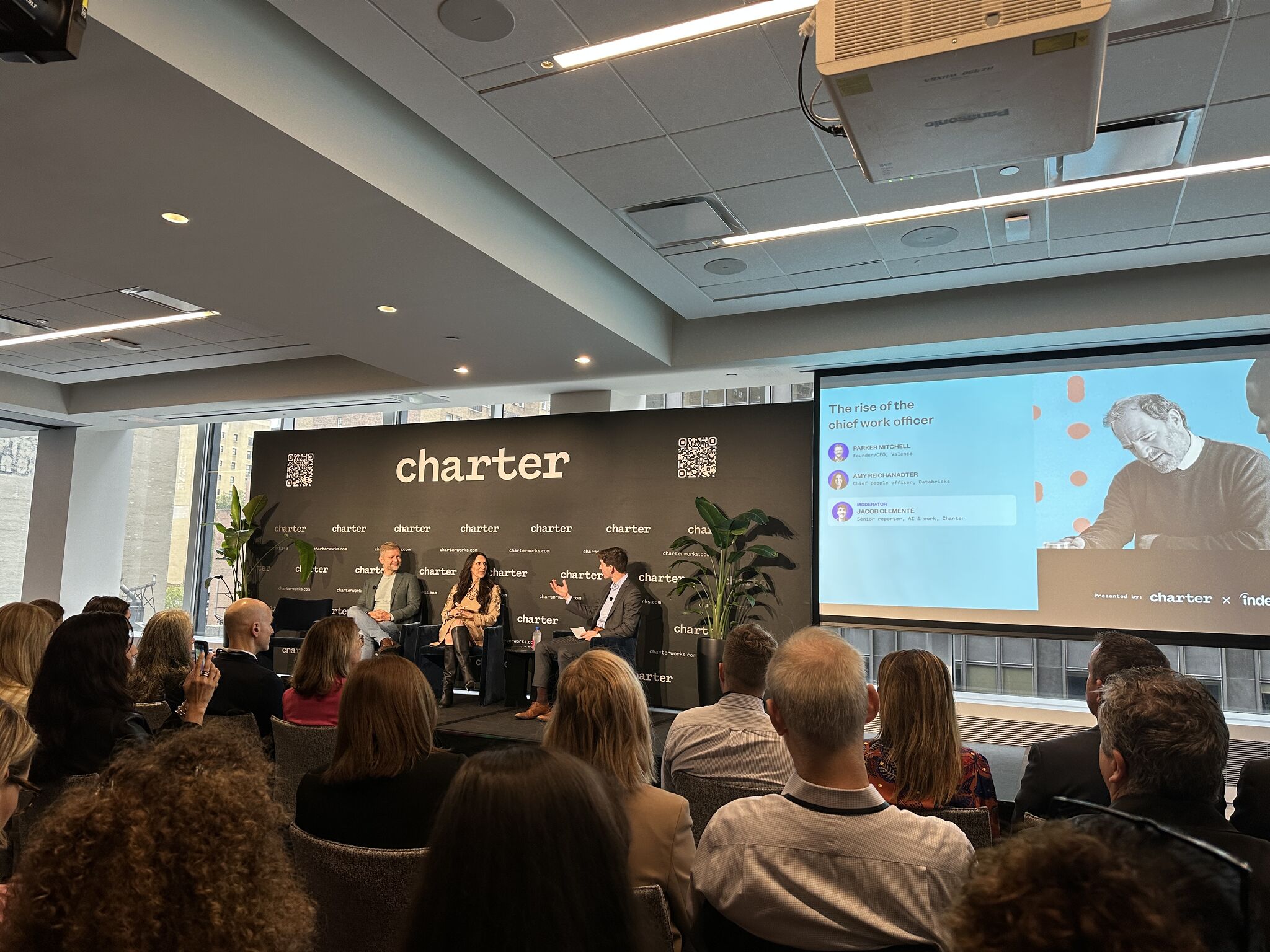
Jolen Anderson, Chief People Officer at BetterUp, asked during the kickoff how HR leaders could step into the IT arena. Amy said HR leaders need to "work on all the floors of the building." She meant it figuratively, but the literal interpretation matters too.
If you're meant to work between departments, how should spaces be designed to enable that collaboration? What role could a Chief (of) Work Officer have in the built environment? As I mentioned earlier, employees expect access to hospitality-grade physical spaces; relying solely on policies and technologies won't create a best-in-class work experience.
I suggested to moderator Jacob Clemente that it might be more helpful to consider a Chief Work Officer as a "Human Chief Operating Officer.” That reframing emphasizes the upstream coordination role of designing how work happens across the organization. The downstream views helping people adapt to change as HR's problem to solve.
As I wrote earlier this year, such an interdisciplinary function could include strategists from three key disciplines:
- From real estate: workplace strategists and design researchers
- From HR: people analytics, employee listening/engagement
- From IT: end user collaboration strategy and UX researchers
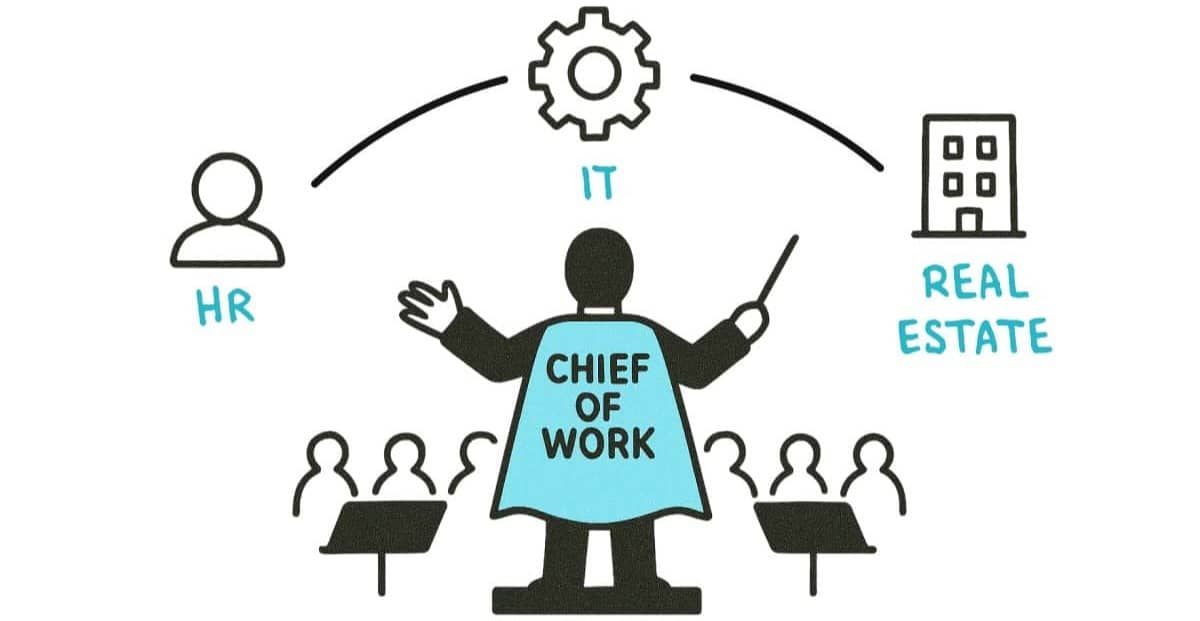
If those teams can't finish each other's sentences or align on a single “North Star,” that's your first opportunity.
Earning Your Way Back to the Ground
Susan Chapman-Hughes dropped one of my favorite quotes from day. When asked what separates effective leaders from ineffective ones, she said managers must "earn their way back to the ground," after having been placed on organizational pedestals.
This seeded several other remarks about leaders building authenticity.
Isabel Berwick from the FT said most leaders don't think carefully about how they present themselves. Hebba Youssef (see "I hate it here"), noted that authentic messaging sets leaders apart. The more you're yourself online, recording thoughtful videos and being genuinely present on platforms like LinkedIn, the better your brand performs.
CBRE CSO Annie Dean (of cost-per-visit fame) put it bluntly:
In order to be a thought leader, you need to have actual thoughts…but don’t just add commentary, add clarity.
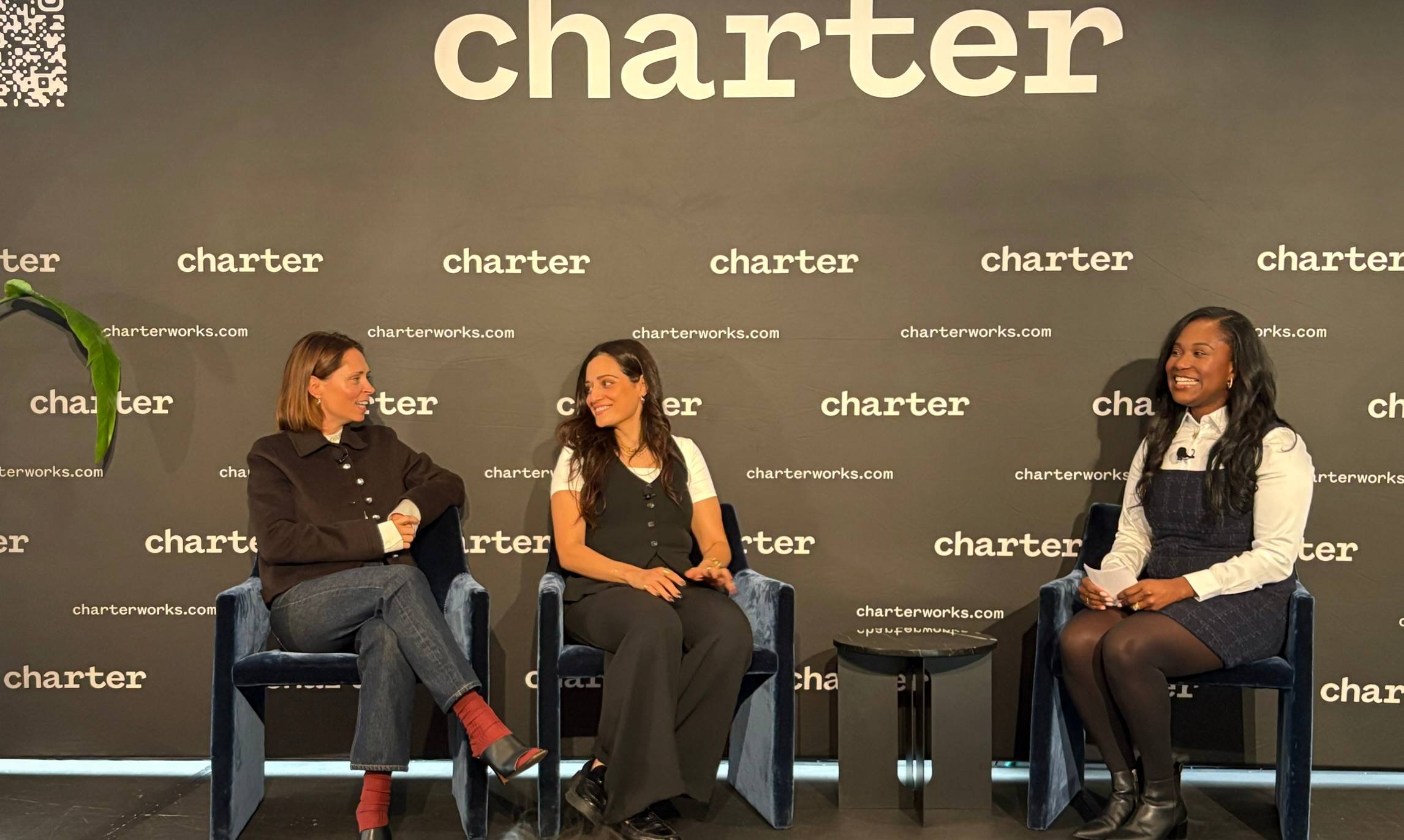
There's a widening gap between leaders who adapt to these realities and those who remain invisible or inauthentic.
I'm trying to practice this all by showing up at new events, amplifying practitioner wisdom, and capturing what's (not) working in The Workline.
The messy middle won't resolve itself with a consulting framework.
Leaders need to listen differently, structure work intentionally across functions, and “earn their way back to the ground” by demonstrating they understand what modern work actually feels like.
Take the Leap
Before this year ends:
- Attend a conference outside your discipline and start crossing functional boundaries.
- Record and post a video to LinkedIn; it doesn’t have to be polished, it just needs to be authentically you.
- Identify the specific parts of your population whose culture and engagement scores matter most.
- Run a listening lab with your cross-functional employee experience team, and see if they can finish each other's sentences.
- Start building towards a Chief of Work or Human COO role—even if only on paper— building it upstream where systems are designed, not downstream where transitions are managed.
The future of work isn't being written by any single function.
Leaders who understand how people, technology, and space intersect are writing it for us all.

Lead Across the Lines of Modern Work with Phil Kirschner
Over 22,000 professionals follow my insights on LinkedIn.
Join them and get my best advice straight to your inbox.


